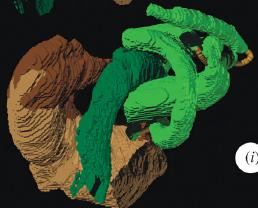
I am the one with the placard from
It was a really good march, the turnout was much larger than I expected (500-800) and dwarfed the rival demonstration (150-200). Everyone was very calm in contrast to the 'animal rights' protest which are marked by scuffles with the police. I guess it's the difference between people who have made a rational choice and fanatics who have lost all sense of perspective in pursuit of their ideology.
While in oxford I had time to check out the attractions such as the Pitt Rivers Museum, Museum of the History of Science (lovely astrolabes) and the Oxford University Museum of Natural History.
Some Links:
The Founder of Pro-test, Laurie Pycroft's livejournal: http://sqrrl101.livejournal.com/
The research defence society: http://www.rds-online.org.uk/ & Blog: http://www.rdsblog.info/
Pro-test: http://www.pro-test.org.uk/
Various blog posts about the protest: Here, here, here, here and here
Update:
The Scientific Activist has an excellent post on the demo: http://scientificactivist.blogspot.com/2006/02/oxford-scientists-bite-back-at-animal.html







